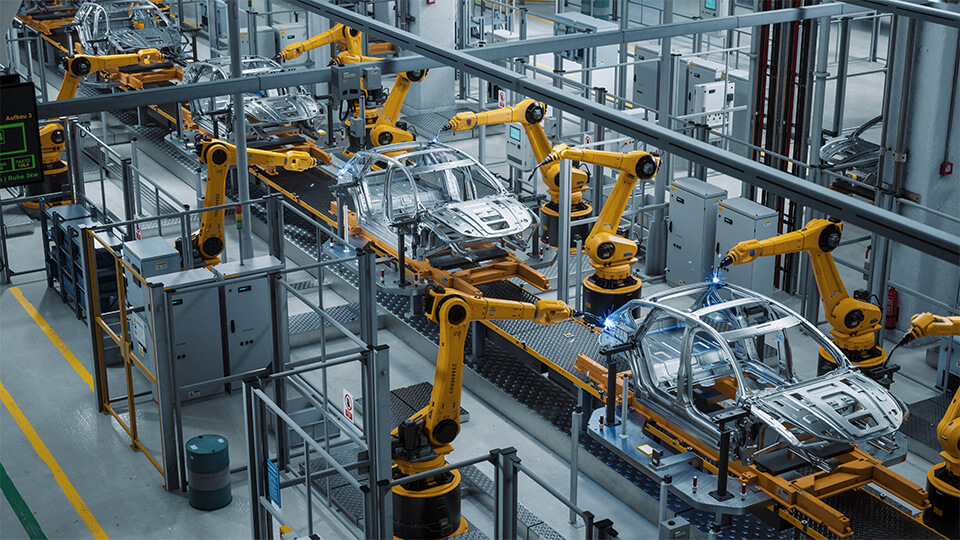The global automotive industry is under pressure like never before — and leadership has to evolve fast.
As 2025 closes, the automotive and mobility industry finds itself facing one of the most geopolitically complex periods in decades. Tariffs, industrial policies, and supply chain disruptions are no longer external risks, they have become central forces shaping corporate strategy. OEMs and suppliers have shifted from chasing lowest-cost efficiency to building resilient, flexible, and often regionalised supply chains.
Mexico produced over 4 million vehicles in 2024, around 4–5% of global output, and are forecast to become the fifth largest vehicle producer globally by the end of 2025. But the real story goes beyond the numbers: Mexico has become home to a deep ecosystem of global Tier 1 suppliers and thousands of Tier 2 and Tier 3 companies that also serve various other industries. This density makes nearshoring compelling as companies know they can find an integrated value chain close to the U.S. market.
Odgers’ Marisa Smith, Linda Shore and Fernando Fernandez de Cordova share their automotive industry expertise from the U.S. and Mexico to discuss the many learnings from 2025 and what leaders and boards should expect in 2026.
Forces Shaping A New Automotive Playbook
The rise of Chinese EV exports sharpened competition globally, but for U.S. leaders the impact was felt through policy, tariffs, and pricing pressure. Executives found themselves balancing cost competitiveness with the need to protect brand trust and local jobs. Boards and CEOs in the U.S., Europe, and beyond needed executives who could operate with global fluency, able to adapt to regional realities while sustaining trust with employees and customers in volatile environments.
This shifted the conversation inside the C-Suite: Chief Supply Chain Officers and Government Affairs leaders became critical in anticipating regulatory outcomes, especially given possible changes in U.S. policy.
We must keep a close watch on how these dynamics continue to evolve. Meanwhile CEOs had to determine when to localize, when to partner, and when to reposition. What emerged was a new mandate for leadership: competition abroad now directly shapes leadership priorities at home.
An important voice in Mexico’s story is Index, the maquiladora association representing over 1,400 plants nationwide. Their role in linking manufacturers, suppliers, and government has been vital in maintaining Mexico’s competitiveness.
At the same time, risks are shaping decisions. Union dynamics tied to government policy, the potential for United States-Mexico-Canada Agreement (USMCA) trade panels, and the start of new USMCA renegotiations in 2026 all create uncertainty. Judicial reforms have raised concerns about contract enforcement, and Chinese investment is under scrutiny. One example is BYD, the world’s largest EV maker, which reportedly shelved a planned Mexico facility amid tariff threats and political pressure — a reminder of how geopolitics directly influences investment choices.
Most Prominent Influences Anticipated In 2026
Looking ahead to 2026, the year will not be defined by stability, but by leaders’ ability to anticipate and adapt to constant shifts in policy, technology, and supply chains. Market access, pricing power, and competitive positioning will depend as much on government decisions as on consumer demand.
Supply chain resilience, strengthened by nearshoring, dual sourcing, and AI-enabled forecasting, will determine who can scale profitably.
At the same time, generative AI and automation will move from pilots to core operations, testing executives on how well they integrate technology without losing authenticity, trust, or culture.
For the Mexican market in 2026, supply chain resilience will be paramount, with dual and triple-sourcing now the norm as companies seek to buffer against volatility and logistical disruption. Additionally, energy and sustainability will also be a significant factor, as access to clean, reliable power increasingly drives investment, particularly for manufacturers aiming to meet ESG commitments. Talent and labour relations will continue as a critical challenge, driven by union dynamics and the widening shortage of technical expertise, calling for strategic leadership and proactive workforce development.
Who’s Leading the Shift - Who’s Needed Next?
In the U.S., 2025 underscored the rise of resilience-first leadership. Chief Supply Chain Officers, CISOs, and government affairs leaders became central to strategy, while CFOs were called upon to allocate capital with discipline in a high-risk environment.
In 2026, demand will grow for Chief AI and Data Officers to unlock operational and product transformation, sustainability executives who can embed ESG without slowing execution, and multifaceted CEOs and GMs, leaders who can innovate boldly while executing with discipline.
Senior supply chain and operations leaders are central to industry resilience in Mexico, while HR executives are vital for labour reform and talent. Finance leaders are increasingly strategic in managing investment and risk, and technology leaders are guiding the shift to electric vehicles and digital transformation. Sustainability and energy executives are moving into the spotlight, with corporate affairs leadership also focal in managing regulation and investor confidence.
Odgers’ Automotive & Mobility Practice leverages deep sector expertise and a global network to deliver transformative leadership that fuels innovation, resilience, and growth across the evolving mobility landscape.
For today’s C-suite, the mandate is clear: resilience, agility, and trust must be lived at the top. The leaders who win will be those who connect industries, cross borders, and shape cultures prepared not just to withstand disruption, but to convert it into momentum.
_______________________________________________________
Get in touch. Follow the links below to discover more, or contact our dedicated Automotive leadership experts here.

Never miss an issue.
Subscribe to our global magazine to hear our latest insights, opinions, and featured articles.
Follow us
Join us on our social media channels and see how we’re addressing today’s biggest issues.



